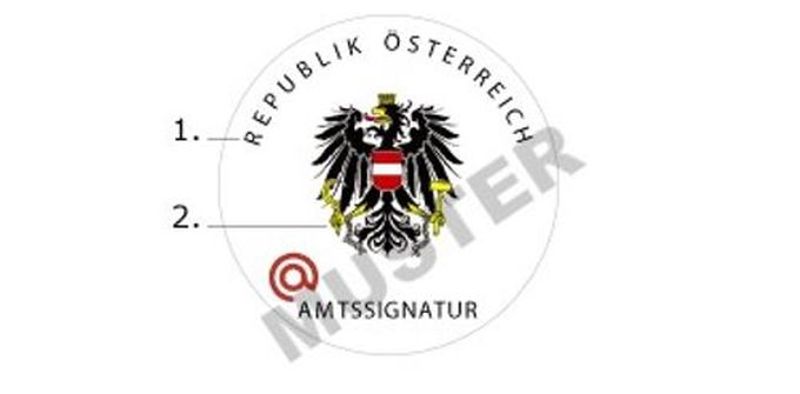Official electronic signatures

Official electronic signatures are the digital signatures on official documents.
Just as, in the e-government system, a person can sign requests digitally using their ID Austria account, so there is also a digital signature for government authorities. This is called an official electronic signature. The official electronic signature is an advanced electronic signature or an advanced electronic seal in the sense of the Regulation on electronic identification and trust services (eIDAS Regulation).
If a government authority applies an official electronic signature to a ruling or other final document, this shows that it is a document from the authorities. The official electronic signature shows the authority from which the document comes and ensures that the document can be verified.

Ways of checking and testing an official electronic signature
- Signature checking by RTR – the Radio and Telecoms Regulatory Authority for Broadcasting and Telecommunications (supervisory body under the Signatures Act)
- Functional testing of ID Austria (certifying body under the Austrian Signatures Act)
- More on Verifying documents bearing an official electronic signature
 Quelle: Amtssignatur Hoheitsverwaltung (Muster) Foto: BKA
Quelle: Amtssignatur Hoheitsverwaltung (Muster) Foto: BKA
The official electronic signature must have certain features that guarantee the security of the signature or seal itself and the validity of the document if it is printed out on paper. Section 19 of the E-Government Act states that, in addition to the figurative mark and the information about verifying the signature or seal, there must also be a note saying that the document bears an official electronic signature.

Appearance of the official electronic signature
In order that everyone involved in e-government can easily recognise official electronic signatures, it makes sense for them to have a standardised appearance.
In addition to the highest levels of government, national administrative agencies may now, under Section 19 paragraph 2 of the E-Government Act, also use official electronic signatures in connection with private sector administration. In that case, however, it is essential to omit the information in the "Note" field stating that a printout of the officially signed document has the same evidential value as a public document.
 Quelle: Amtssignatur im Rahmen der Privatwirtschaftsverwaltung (Muster) Foto: BKA
Quelle: Amtssignatur im Rahmen der Privatwirtschaftsverwaltung (Muster) Foto: BKA
The official electronic signature is used to show that this is an official document, so it must meet the following conditions:
- An advanced electronic signature or an advanced electronic seal within the meaning of the eIDAS Regulation (Section 19 paragraph 1 of the E-Government Act)
- The document's origin must be identifiable by means of an appropriate attribute (the administrative identification feature of that authority) in the certificate
- An official electronic signature may only be used by customers in the public sector when signing electronically or issuing a document created by them (Section 19 paragraph 2 of the E-Government Act)
- The official electronic signature must be shown in screen shots of the signed/sealed electronic document, with a figurative mark and note that the document has been officially signed (Section 19 paragraph 3 of the E-Government Act)
- The information required for checking the signature must be provided by the customer in the public sector (19 paragraph 3 of the E-Government Act)
Note for authorities and official offices: Ordering the official electronic signature
The administrative agencies' central IT service providers offer the official electronic signature as a shared service.
There are free modules which can be used to integrate online applications into the administrative agency's IT infrastructure.
Guidelines on official electronic signatures
The guidelines are intended to provide assistance and instructions when introducing an official electronic signature: from ordering the certificate to creating the figurative mark and choosing suitable technical signature and checking applications.
Specification of the layout for an official electronic signature
This document describes in detail the appearance of an official electronic signature, firstly in order to present a standardised appearance to citizens, and, secondly, to simplify the automated reconstruction and verification of official electronic signatures in PDF format.
For any other questions about implementation, a list of FAQs has been compiled here: FAQs about official electronic signatures.
Figurative marks for official electronic signatures
An official electronic signature on electronic documents is shown with a figurative mark which the authority has securely published as its own.
The E-Government Act says about the figurative mark only that the authority should publish it securely on the Internet. The figurative mark of the BMF is published here: Official electronic signatures.

Examples of figurative mark designs
1. Name of the institution (round the top)
2. Emblem or logo (positioned in the middle)
Below: Official electronic signature as a fixed element
The graphic design of the figurative mark is up to the authority in question.
